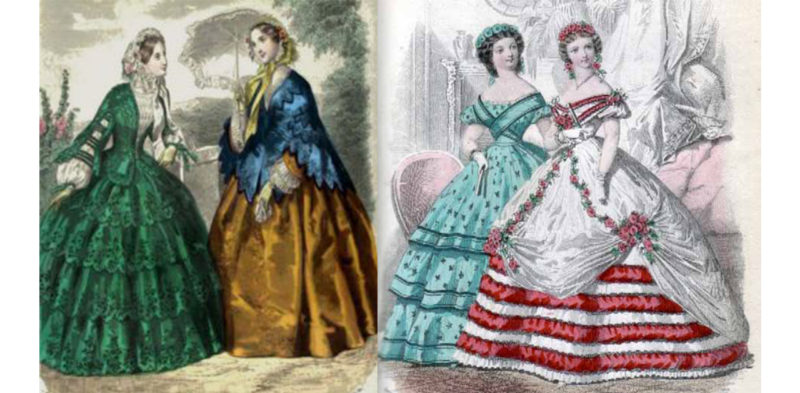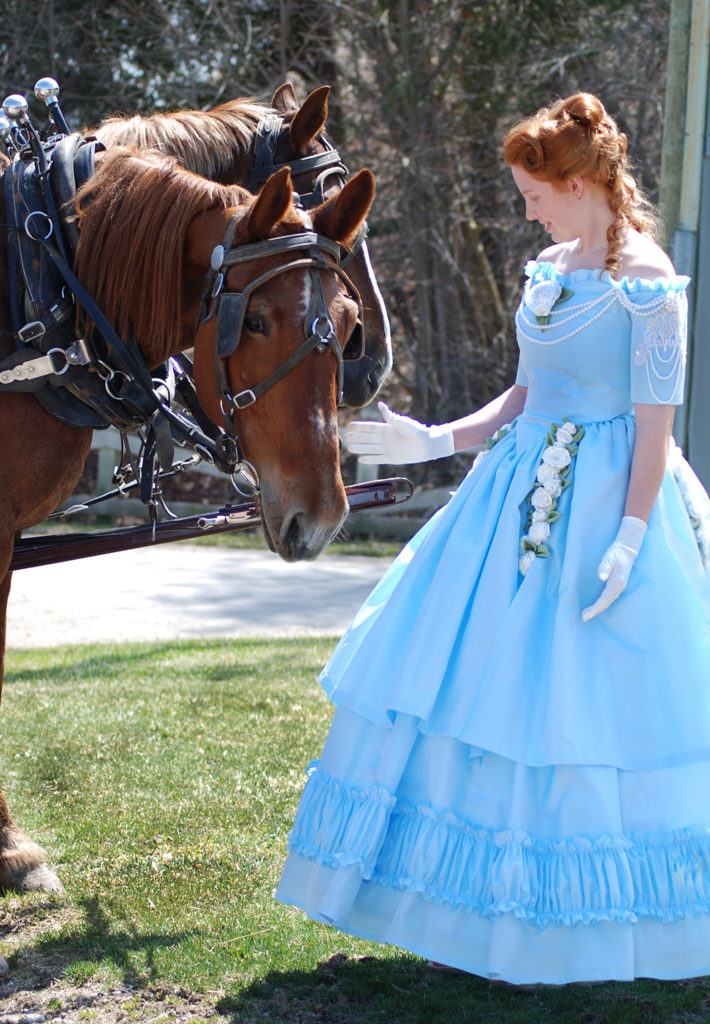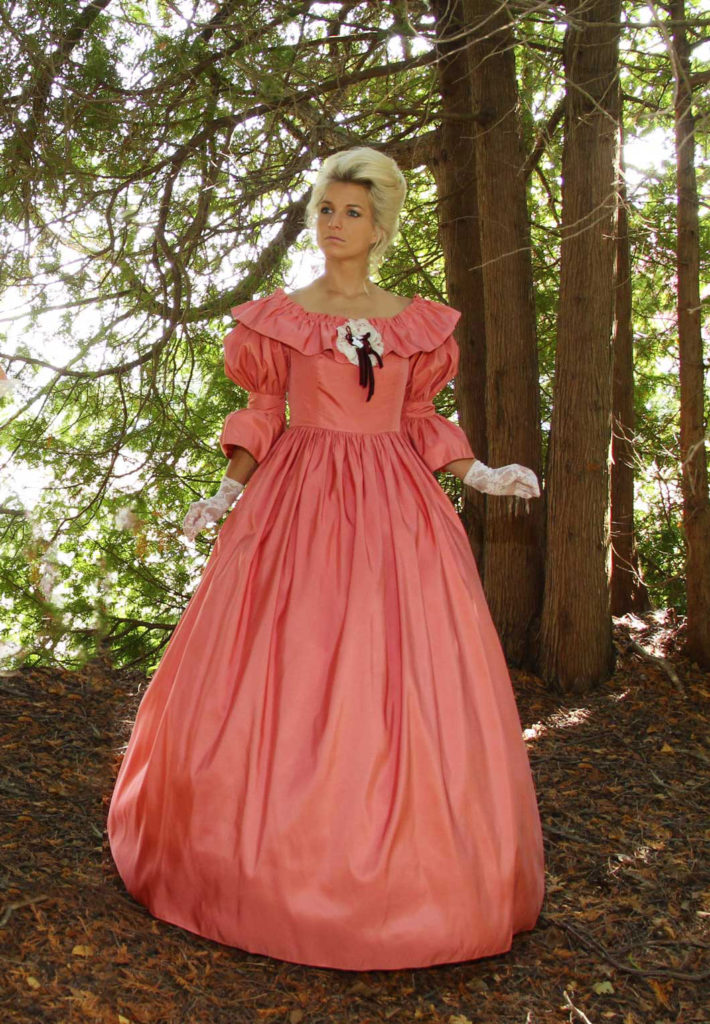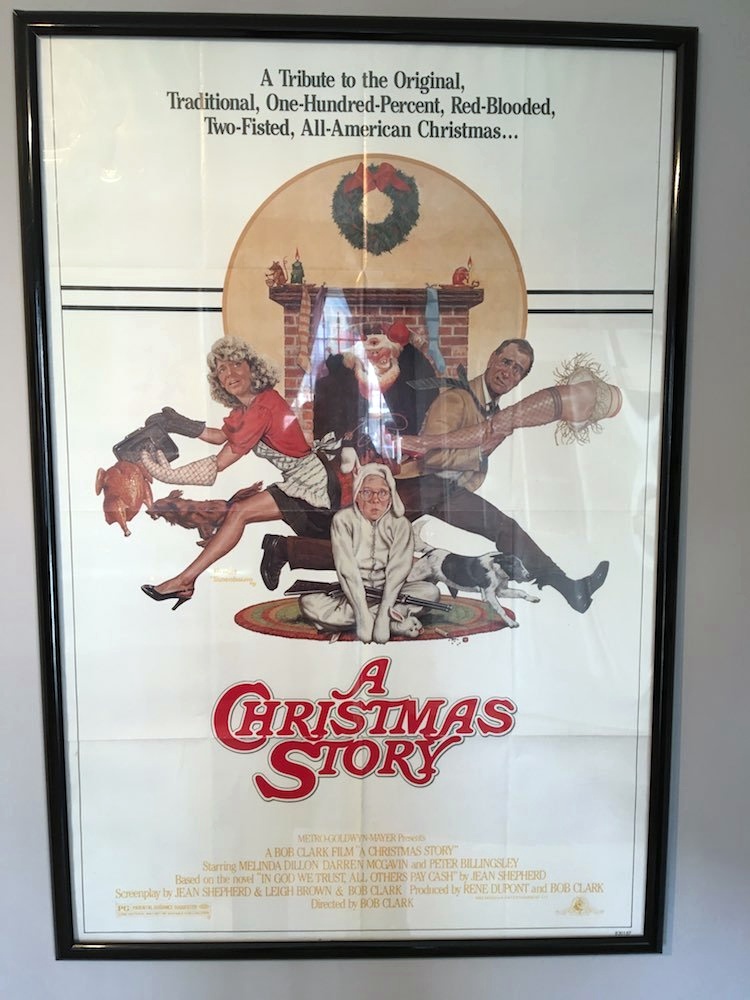Skirt Hems Widen through Creative Use of Petticoats
As the Romantic era in fashion came to a close in the 1830s and evolved into what we consider Victorian era, emphasis returned to the natural waistline. Corsets were back in fashion and the ankle-length skirt took on a bell shape, becoming so full that numerous petticoats were needed to create and maintain its shape; three at a minimum, although up to six were not unusual. By the 1840s, petticoats were made of stiffer materials such as horse hair. Sometimes petticoats were stiffened with cane. Small bustle pads also helped hold out the upper part of the skirt.
Skirts continued to widen throughout the 1840s and into the 1850s. Cartridge pleats (think Elizabethan collar) were used to help the skirt break away from the waist. Emphasis was placed on horizontal lines. Flounces were added to skirts, making them appear even wider. Flounces were so popular that fabrics were milled specifically to be cut into strips and used for this purpose.

Cage Crinoline to the Rescue
By the mid-1850s, skirts could not be widened any further through the use of petticoats. The weight of the underskirts alone was prohibitive and women were tired of having to wash them! The cage crinoline (hoop underskirt) was introduced in 1856 and women heaved a collective sigh of relief. The hoop was round, creating somewhat of a bustled look, and it allowed for skirts to widen even further. At first, it was used in an effort by middle-class women to keep up with high society but was was worn by nearly all women by 1860, except those who were manual laborers such farmhands and floor scrubbers.
Gored panels started to appear in 1860, which allowed for less pleating and fullness at the waistline. The onset of the Civil War in the United States brought austerity measures that affected fabric use during its duration. The excessive flounces and trimmings of the 1850s slowly disappeared during this time. The round cage crinoline of 1860 became an ellipsis by 1863 and emphasis turned to the back of the skirt. Goring allowed skirts to take on more of a conical shape by 1865. Gored panels allowed for a smooth waistline rather than a pleated one and brought a closer fit to the hips.
Skirt sizes saw a big reduction in 1867 and were often looped up for walking. Because this left petticoats exposed, overskirts were introduced. Goring gave way to straight cuts in the rear by 1868. This is when the first bustle appeared. By 1869, the soft bustle replaced the cage crinoline.
Find out more about how skirts changed throughout the Victorian era in Part 2 of this series.
Here are a few of Recollections‘ history-inspired Victorian fashions.
Resources
Each link leads to the various decades comprising the Victorian era.
http://www.apparelsearch.com/definitions/fashion/victorian_fashion.htm
http://www.fashion-era.com/the_victorian_era.htm















Leave A Comment